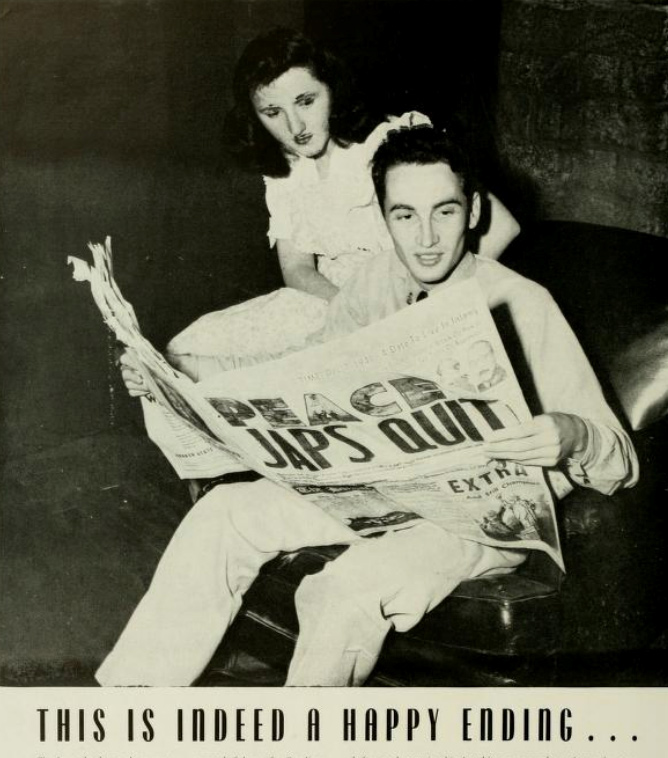World War II had profound effects on the American home front—including UNC’s Department of History. When the war came to Carolina, our faculty, staff, and students quickly responded to the nation’s changing needs.
After the United States declared war in late 1941, UNC faced a reduction in enrollment as young men and women joined the armed forces. (The University opened its doors to women in the late nineteenth century, but it would continue to exclude African Americans until the 1950s.) History courses were not immune to declining enrollment. Southern historian Albert Ray Newsome, who served as Department Head during the war, counted 333 undergraduate students in history courses in the first months of 1943 and only 233 the following fall.

To withstand this financial shock, UNC’s administration sought opportunities to provide military training using campus facilities and instructors. In September 1943, University President Frank Porter Graham announced that UNC would enroll approximately 1,300 V-12 Navy College Training Program students and 250 Army Specialized Training Program (ASTP) language trainees, among other programs. Although not as well-known as UNC’s Navy Pre-Flight Training School, the V-12 and ASTP programs trained officers and specialists to help meet increased personnel needs in those branches of the armed forces. By the war’s end, neither students nor faculty would ever be the same.
The military training programs kept UNC and the Department of History afloat during the war. In 1943, President Graham reminded faculty members that “the University is one of the fortunate institutions of this country in that it is able to operate and maintain the salaries of its staff, while many other institutions are closing up or reducing staff.” Enrollment in history courses skyrocketed as a result of the Navy and Army programs. In the summer of 1943 alone, 788 Navy students took history classes.
Because the Navy wanted its officers to have training in history, the Department suddenly struggled to find instructors for all of its courses. The men who made up the tenured faculty increased their teaching loads by 25%, and many deprioritized their research during the war. The Department also hired temporary instructors to teach introductory history classes for the Navy V-12 program, including two local women who were trained historians. As in other industries, the unavailability of men to teach history on the home front gave women new employment opportunities. Indeed, only a few years earlier, the Department had denied a graduate fellowship to a woman even though she had “the strongest application” of all 69 candidates. The professors who reviewed her application admitted that “she undoubtedly has everything—personality, intellectual ability, scholarship and teaching ability and experience,” but they also believed “that men were more suitable for the relationships which the work of the fellowship necessitates.”
As the Department adjusted to increased personnel demands, individual instructors adjusted to teaching in a strict military setting. The Navy and Army standardized the historical narratives that they wanted their students to learn, and they provided V-12 and ASTP instructors with content guides and course materials. Sometimes, professors were surprised by Army and Navy expectations. Understandably, Newsome initially arranged for Europeanists to teach the Navy’s required “Historical Background of World War II” course. However, he later learned that the Navy expected the course to be an introduction to United States history that also emphasized current affairs, and he had to reassign instructors accordingly.
Although most faculty members supported the war effort as Army or Navy instructors, some played more active roles in World War II. Professor J. Caryle Sitterson was drafted in the spring of 1942, but he was soon discharged for medical reasons and resumed teaching at UNC. Professor George E. Mowry, a specialist in the American Progressive era, left UNC to write manuals and textbooks for the U.S. Army Quartermaster, the officer who oversees the distribution of supplies within the Army. He did not return to UNC after the war. Professor Howard K. Beale served as Director of the National Japanese American Student Relocation Council. This council relocated Nisei college students from internment camps to colleges throughout the country. (Nisei were people born in the United States whose parents were born in Japan.)
When the war ended in 1945, the department returned to a state of relative normalcy. Without V-12 and ASTP obligations, faculty resumed teaching their usual courses. As soldiers came home, civilian enrollment at UNC increased, and the Department happily reported an uptick “in course enrollment, history majors, and graduate students.” In the aftermath of a global war, however, faculty members increasingly recognized the importance of teaching histories beyond the United States and Western Europe. In the final years of the 1940s, the Department worked to expand the breadth of its course offerings to include the histories of Latin America, China, Japan, and Russia.

–Aubrey Lauersdorf
